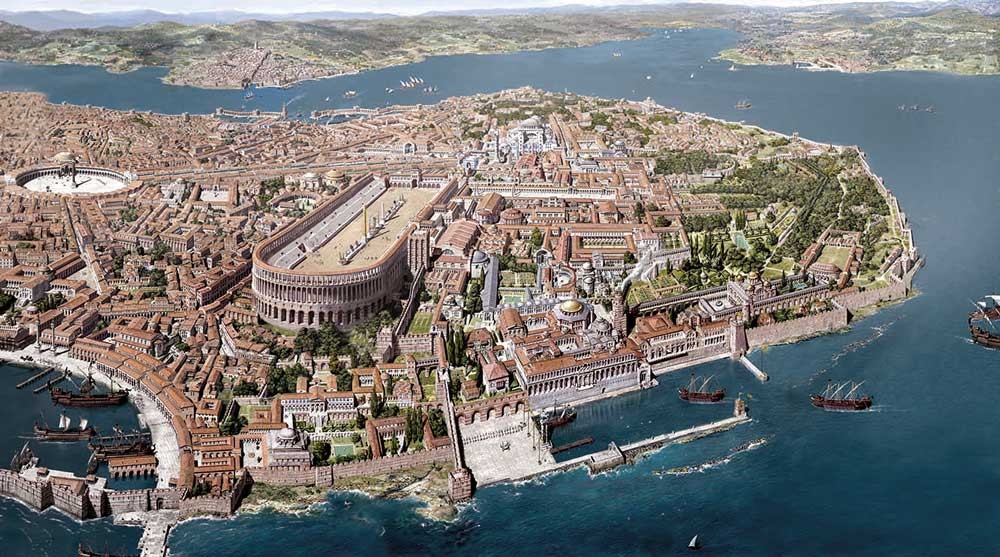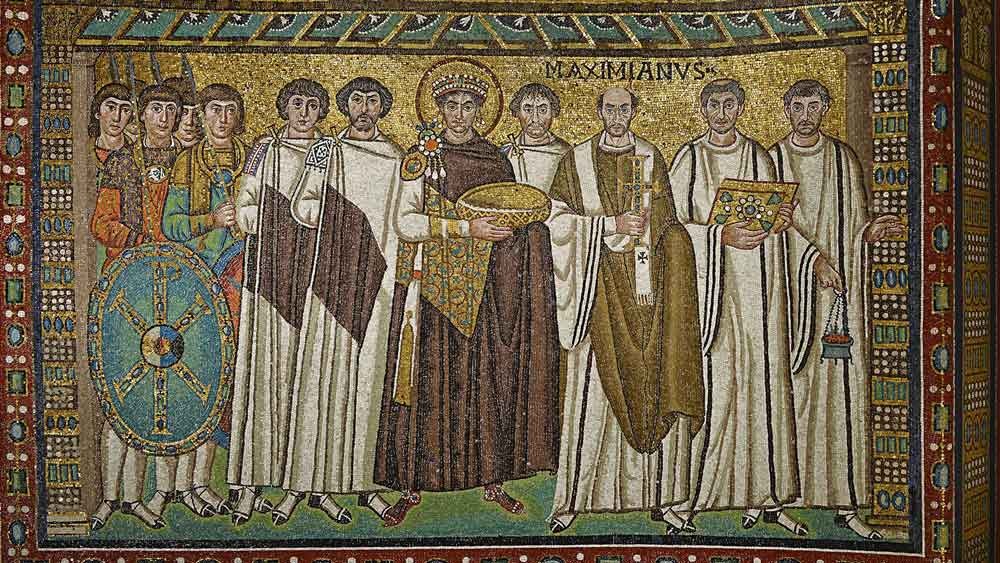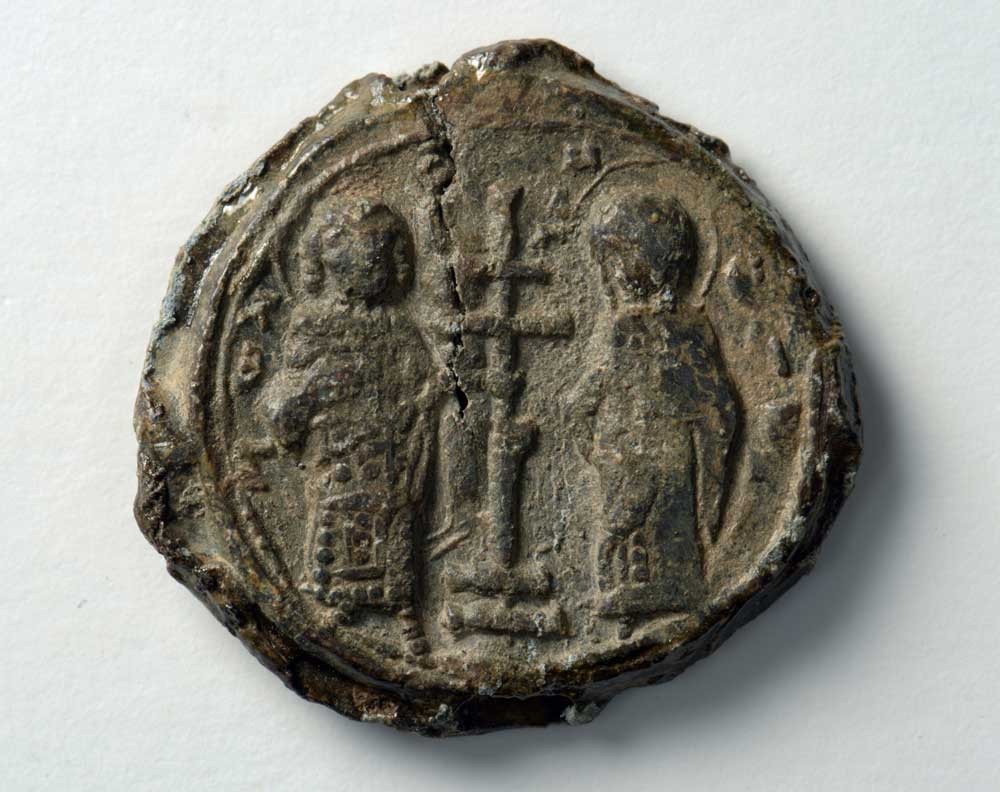Why Was Constantinople Important? Constantinople, now known as Istanbul, Turkey, held immense significance for over a millennium. This article explores the historical importance of Constantinople, examining its geographical advantages, its role as the “New Rome,” its prominence as a Christian capital, and its lasting impact on the medieval world. Discover the allure of Byzantium and the reasons behind its historical prominence and get the answers you’re looking for today. Let’s delve into the Constantinople’s importance and explore its place in history.
1. Strategic Location and Geography
Constantinople’s strategic location, serving as a bridge between Europe and Asia, was a key factor in its importance. Situated on a peninsula overlooking the Bosphorus Strait, the city controlled vital trade routes connecting the Black Sea and the Mediterranean Sea. This geographic advantage facilitated economic prosperity and allowed Constantinople to become a major commercial hub.
1.1 A Crossroads of Trade and Military Routes
Constantinople was strategically located at the intersection of major commercial and military routes. This positioning was crucial for the Roman Empire, requiring a strong center in its eastern region. The city’s geographical advantages included connections to both the Black Sea and the Aegean Sea, as well as to the continents of Europe and Asia, making it an ideal choice for a capital.
1.2 Natural Defenses and Resources
The city’s unique geography provided natural defenses, including the Sea of Marmara and the Golden Horn Bay, which surrounded two-thirds of the city. These natural features, combined with the 45 km-long Theodosian Walls, offered significant protection against invasions. Additionally, the surrounding fertile lands and natural harbors ensured a consistent supply of wheat and other essential resources, supporting a large population.
1.3 Population Growth
Constantinople experienced rapid population growth from its earliest days. By around 400 AD, the city was home to approximately 100,000 Christians, according to the writings of John Chrysostom. Historians estimate that the city’s population reached around 400,000 before the devastating Justinian plague of 542 AD. The city’s ability to sustain and grow its population was a testament to its favorable location and resources.
2. Constantinople as the New Rome
Constantine’s decision to move the capital of the Roman Empire from Rome to Byzantium in 324 AD marked a pivotal moment in history. Renaming the city Constantinople, he sought to establish a “New Rome” that would carry on the legacy of the Roman Empire while embracing Christianity. This transition redefined the city’s identity and shaped its future.
2.1 Symbolism and Identity
Constantinople’s identity was deeply rooted in its symbolism as the New Rome. The Byzantines used terms like “Rome,” “New Rome,” and “Second Rome” to refer to their capital, and its inhabitants were known as “Romaioi.” The emperors of Constantinople saw themselves as the direct successors of the Roman emperors, inheriting their authority and legitimacy.
2.2 The Byzantine Empire
The term “Byzantine” was coined later in history to describe the Eastern Roman Empire, with Constantinople as its capital. This empire preserved Roman traditions, laws, and administrative structures, while also incorporating Greek culture and Orthodox Christianity. The Byzantine emperors maintained absolute power and claimed authority over territories beyond their borders, drawing from the legacy of Old Rome.
2.3 Integration of Christian Doctrine
The concept of the eternal city, inherited from Old Rome, was integrated into Christian doctrine. Constantinople was envisioned as a city that would endure until the end of the world and the Last Judgment. This integration of Roman imperial ideology with Christian beliefs further solidified Constantinople’s status as a unique and divinely ordained capital.
3. Constantinople as the Christian Capital
Constantinople’s consecration on May 11, 330 AD, established it as the world’s first Christian capital. This marked a significant shift in the religious landscape, as Christianity became central to the city’s identity and governance. The idea of Constantinople as a universal Christian capital, akin to a New Jerusalem, was fundamental to Byzantine political ideology.
3.1 Divine Mandate of the Emperor
The Byzantine emperor was often referred to as the “Lord’s Anointed,” drawing parallels to figures like Moses, Elijah, and David. As the leader of God’s chosen people (Christians), the emperor held a sacred role in leading and protecting the Christian faith. This ideology infused the new capital with Old Testament biblical influences, reinforcing its spiritual importance.
3.2 Constantinople as New Jerusalem
The concept of Constantinople as a New Jerusalem emerged around 500 AD and became prevalent in religious texts. This idea belonged to the realm of the imaginary, where the city was envisioned as a heavenly city on Earth. Visual culture played a crucial role in representing and constructing this identity.
3.3 Visual Representation in Hagia Sophia
The lunette above the south vestibule portal in Hagia Sophia stands as a monumental example of Constantinople’s identity as a New Jerusalem. The composition features the Virgin Mary enthroned, holding the Christ-child, flanked by Emperor Constantine and Emperor Justinian. The emperors are depicted offering models of the city and the church, symbolizing their dedication to the Virgin and identifying Constantinople and Hagia Sophia as earthly elements of the Heavenly Jerusalem.
4. The Cult of the Virgin Mary (Theotokos)
The Virgin Mary, known as Theotokos (Mother of God) in Greek, held a central position in Byzantine religious identity. Byzantines revered Theotokos as the mediator between humanity and Christ, as well as the protectress of Constantinople. Her importance is evident in numerous artistic representations, sacred sites, and liturgical hymns dedicated to her.
4.1 Affirmation at the Council of Ephesus
The 3rd Ecumenical Council in Ephesus in 431 AD affirmed Mary as Theotokos, solidifying her role in Christian theology. During the reign of Theodosius II, relics and icons associated with Mary were gathered in the city, serving as tangible confirmations of her presence.
4.2 Theotokos Hodegetria
Aelia Eudocia, the wife of Emperor Theodosius II, brought an icon of Theotokos from Jerusalem to Constantinople. Believed to be an authentic portrait of Theotokos by Saint Luke the Apostle, the image of her holding the Christ-child became known as Theotokos Hodegetria (Our Lady of the Way). It was considered a proto-icon, whose authorship and confirmation of the Incarnation of Logos made it equivalent to the words of the Gospels.
4.3 Imperial Palladium
Through imperial ceremonies and symbolism, Theotokos Hodegetria rose to the rank of imperial palladium, a sacred object believed to protect the city. Byzantines believed their capital was the chosen residence of Theotokos, her earthly dwelling. The city was dedicated to and identified with her, reinforcing the belief that the Virgin wished to be with her people in her city. During times of great sieges, the Virgin Mary was seen as the ultimate protector of the capital.
5. The Churches of Constantinople
The numerous religious buildings in Constantinople and its surroundings were an essential aspect of its identity as a Christian capital. Although many of these churches and monasteries no longer exist, historical estimations suggest that Constantinople had around 1,000 churches throughout its eleven-century-long history. These churches housed approximately 3,600 relics belonging to 476 different saints.
5.1 The Holy City
Byzantine tradition held Constantinople as the Holy City, where the second coming of Christ was awaited. Pilgrims and travelers described the city as a spatial icon, whose sacredness transcended its historical, architectural, and urbanistic realities. The city’s religious significance was palpable to those who visited it.
5.2 Relics and Icons
In the eyes of a Medieval person, a church was more than just a building decorated with marble and gold. It was a sacred space where the influence of holy relics and icons could be experienced. The power of these relics and icons was disseminated throughout the city through processions, where they were carried through the streets.
5.3 A City Reliquary
From its founding, Constantinople began “collecting” Christian relics. By the 12th century, it was regarded even in the West as a city reliquary, a container or shrine in which sacred relics were kept. This accumulation of relics further enhanced the city’s reputation as a center of Christian spirituality and pilgrimage.
6. The Ruler of Constantinople
Byzantine political ideology played a crucial role in shaping the idea of Constantinople as a universal Christian capital. At the center of this ideology was the ruler of Constantinople, who held immense power and authority over the Christian world. Despite historical challenges, the Byzantines maintained a firm belief in the emperorship.
6.1 Divine Authority
Similar to the pagan Roman Empire, the imperial authority in the Christianized Byzantine Empire retained its divine character. A Byzantine emperor was considered the Chosen of God, called to rule by Divine Providence and fulfill the Divine Will as the sovereign of the empire, protected by God.
6.2 Leader and Protector
The emperor was seen as the leader of the entire world and the protector of the Christian faith. He was considered the only legitimate emperor on Earth, chosen by God and the successor of the Roman emperors, tracing his lineage back to Augustus. This idea permeated life in Constantinople, influencing monuments, art, seals, coins, speeches, written documents, and court ceremonies.
6.3 Recognition of Supremacy
The supremacy of the Byzantine emperor was recognized even by independent Medieval countries. Many non-Byzantine nobles and monarchs held Byzantine court titles obtained from Constantinople. This system placed Medieval countries within a hierarchy of states, with the Byzantine autocrat at the summit as the head of Christendom.
7. The Apocalypse Is Coming
The fall of Constantinople in 1453 marked more than just a transition of imperial power from the Byzantine to the Ottoman Empire. Contemporary observers, including Muslims, Christians, and Jews, interpreted the Ottoman conquest as an omen of the End of Time, or the Last Hour.
7.1 Apocalyptic Tradition
Apocalyptic literature had a rich and popular tradition in the history of the Byzantine Empire. Byzantines often associated the end of their empire with the end of the world. By the 15th century, with the Empire reduced to a small area around Constantinople, the city’s apocalyptic role was further magnified.
7.2 European Apocalypticism
By the 15th century, Byzantine apocalyptic tradition significantly influenced European apocalypticism. The fall of Constantinople ignited new apocalyptic speculations in Western Europe, leading to plans for restoring Jerusalem and Constantinople and establishing the Last World Empire. These ideas became an integral part of the political ideologies of European monarchs.
7.3 Prophecies of Restoration
According to Byzantine and European apocalyptic traditions, the return of Constantinople to Christian rule was prophesized. The Last Roman Emperor would “tame” the Blond Peoples (associated with Nordic peoples), defeat the “Ishmaelites,” and reclaim the capital with their help. This prophecy provided hope for the eventual restoration of Christian control over Constantinople.
Constantinople’s significance extended far beyond its physical attributes and strategic location. As the New Rome, the Christian capital, and the protector of Christendom, it left an indelible mark on history. Its influence permeated political, religious, and cultural spheres, shaping the course of the Middle Ages and beyond.
Understanding Constantinople’s Importance: A Summary
To fully grasp the importance of Constantinople, let’s summarize the key aspects discussed above.
| Aspect | Description |
|---|---|
| Strategic Location | Situated between Europe and Asia, controlling vital trade routes between the Black Sea and the Mediterranean. |
| New Rome | Established as the successor to the Roman Empire, preserving its traditions, laws, and administrative structures while embracing Christianity. |
| Christian Capital | Consecrated as the first Christian capital, serving as the center of Orthodox Christianity and embodying the idea of a New Jerusalem. |
| Cult of the Virgin Mary | Theotokos (Virgin Mary) held a central role as the mediator between humanity and Christ, and the protectress of Constantinople, with numerous dedications and representations. |
| Churches of Constantinople | Home to approximately 1,000 churches and monasteries, housing thousands of relics and icons, making it a significant pilgrimage site. |
| The Ruler of Constantinople | The Byzantine emperor held divine authority as the leader and protector of the Christian world, recognized even by independent Medieval countries. |
| Apocalyptic Significance | The fall of Constantinople in 1453 was seen as an apocalyptic omen, sparking new apocalyptic speculations and plans for restoration. |



This table provides a concise overview of the multifaceted importance of Constantinople, highlighting its role in trade, religion, politics, and apocalyptic beliefs.
Delving Deeper into User Intent: Why People Search for “Why Was Constantinople Important”
Understanding why individuals search for “Why was Constantinople important” provides valuable insights into their specific interests and informational needs. Here are five key user intents behind this search query:
- Educational Research: Students and educators researching the historical significance of Constantinople for academic purposes, such as school projects, essays, or lesson planning.
- Historical Curiosity: Individuals with a general interest in history seeking to learn about the role and impact of Constantinople in shaping world events.
- Travel Planning: Travelers planning a trip to Istanbul (formerly Constantinople) who wish to understand the historical context and cultural significance of the city’s landmarks.
- Genealogical Research: People tracing their ancestry who want to learn about Constantinople’s role in their family history, particularly if their ancestors were associated with the Byzantine Empire.
- Cultural Enrichment: Individuals seeking to broaden their knowledge of Byzantine culture, art, and religion, and understanding Constantinople’s role as the heart of this civilization.
Frequently Asked Questions (FAQ) About Constantinople’s Importance
Here are some frequently asked questions that address key aspects of Constantinople’s historical significance:
- Why did Constantine choose Constantinople as the new capital? Constantine chose Constantinople due to its strategic location, defensible geography, and economic potential.
- What was the significance of Constantinople’s walls? The Theodosian Walls provided robust protection, making Constantinople one of the most fortified cities in the world.
- How did Constantinople contribute to the preservation of classical knowledge? Constantinople preserved and transmitted classical Greek and Roman texts, influencing the Renaissance.
- What role did Constantinople play in the spread of Christianity? As the Christian capital, Constantinople fostered the growth and spread of Orthodox Christianity throughout the Byzantine Empire and beyond.
- Why is Hagia Sophia important? Hagia Sophia served as the primary cathedral of Constantinople and is renowned for its architectural and artistic significance.
- How did the fall of Constantinople affect Europe? The fall of Constantinople led to an influx of Greek scholars and texts into Europe, contributing to the Renaissance.
- What was the impact of Constantinople on trade? Constantinople controlled vital trade routes, serving as a major commercial hub connecting Europe and Asia.
- Who were the key figures associated with Constantinople’s history? Key figures include Constantine the Great, Justinian I, and Theodora, who shaped the city’s political, religious, and cultural landscape.
- What is the legacy of Constantinople today? Constantinople’s legacy lives on through its architectural marvels, cultural traditions, and historical significance as a bridge between East and West.
- How did the citizens of Constantinople view their city? Citizens of Constantinople viewed their city as divinely protected, a center of culture and power, and the heart of the Christian world.
These FAQs provide concise answers to common queries, enhancing understanding of Constantinople’s multifaceted importance and its enduring legacy in world history.
Still Curious About Constantinople?
Do you have more questions about the historical significance of Constantinople? Are you seeking deeper insights into specific aspects of its history, culture, or impact? At WHY.EDU.VN, we understand the challenges of finding accurate and reliable answers to complex questions. That’s why we’ve created a platform dedicated to providing expert-driven, comprehensive solutions to your queries.
Our team of knowledgeable professionals is ready to assist you with detailed explanations, diverse perspectives, and credible information. Whether you’re a student, a history enthusiast, or simply curious about the world, WHY.EDU.VN is your go-to resource for trustworthy answers.
Visit why.edu.vn today and ask your questions! Let us help you explore the fascinating world of Constantinople and beyond. You can find us at 101 Curiosity Lane, Answer Town, CA 90210, United States. Contact us on Whatsapp: +1 (213) 555-0101. We’re here to help you discover the answers you seek.
